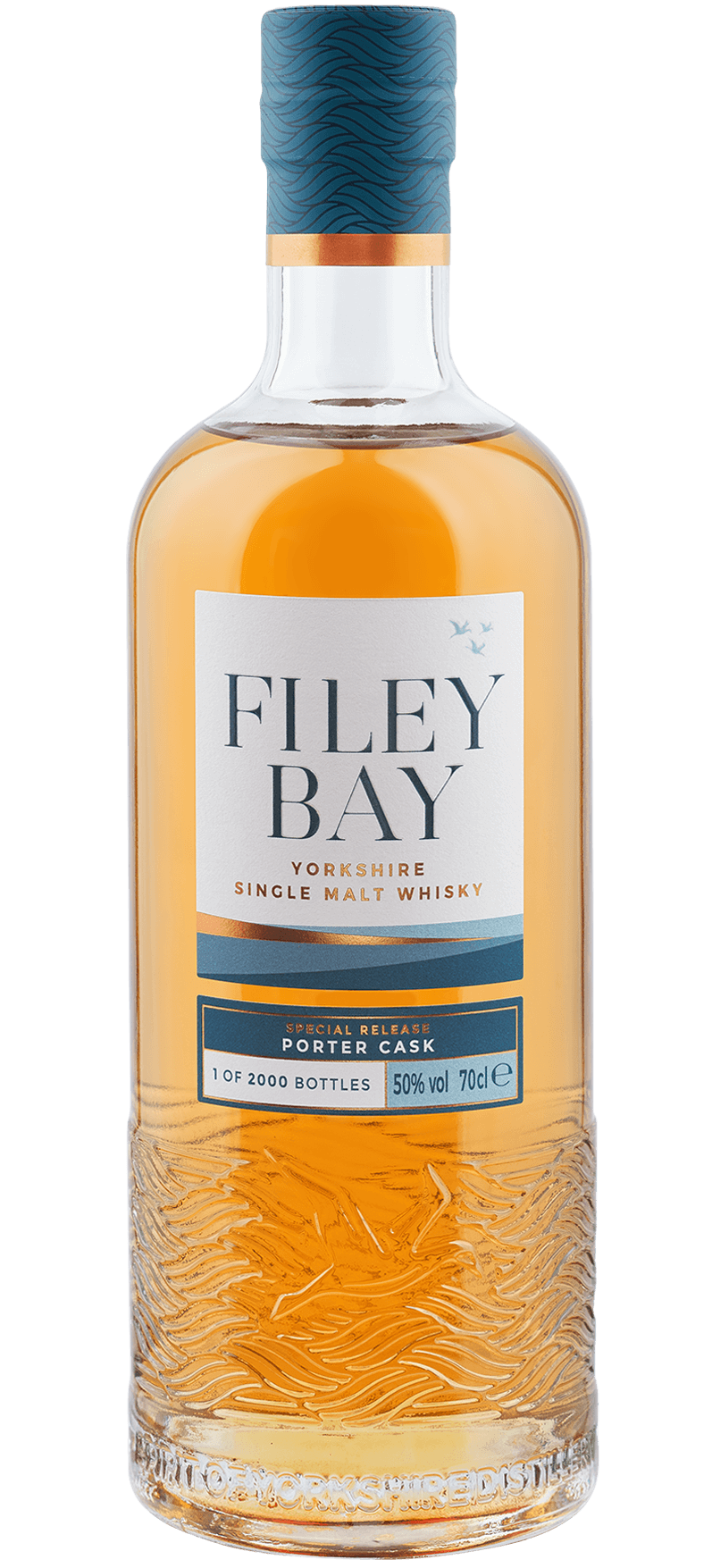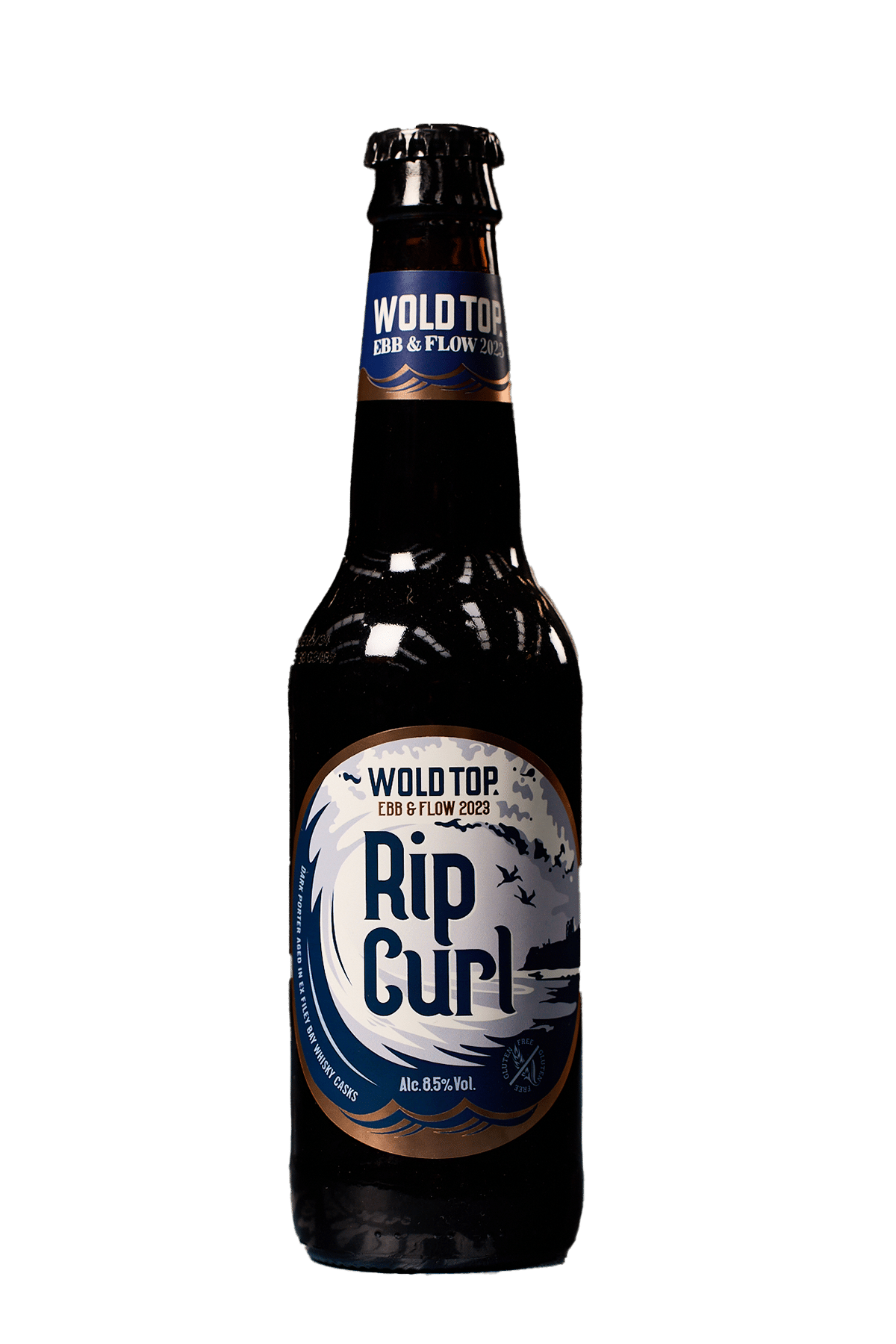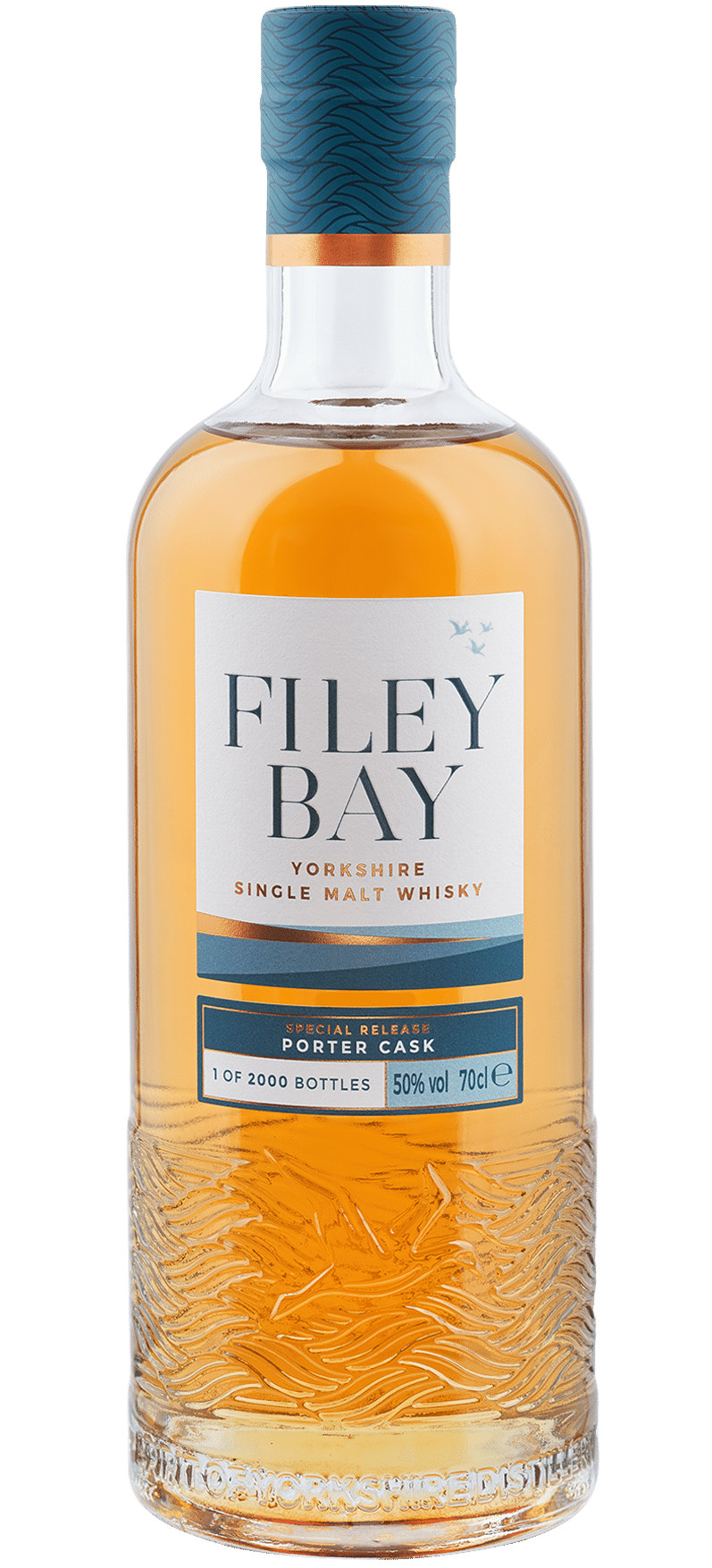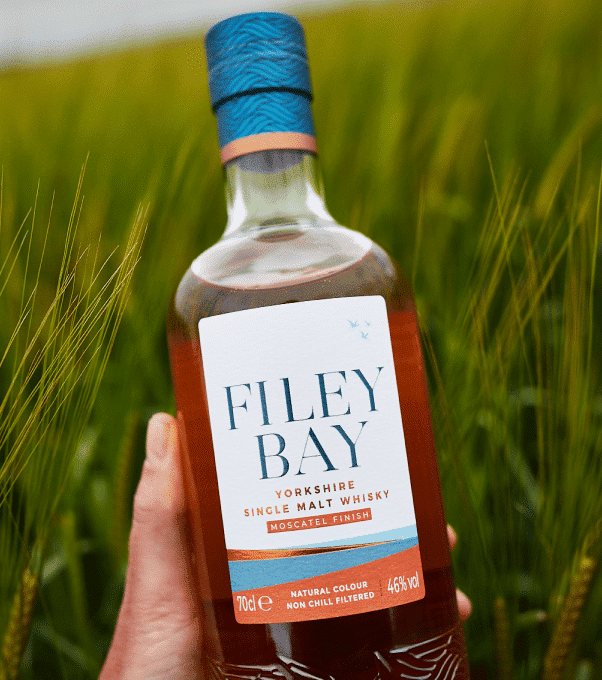Distilling
Distilling: Filey Bay Peated Finish
Peated whisky the who, why and wherefore…
Peated whisky, whether you love it, or hate it there is no denying that it is one of the most traditional and iconic styles of whisky made in the world today. Many of the well known single malt whiskies from Scotland, in particular from the Western Isles, are heavily peated.
One of the most common misconceptions within whisky as a whole is that peated whisky is peated because of the water used in production, a very well-established myth. However, the true origin of peaty flavour in whisky is peat smoke and how it is used when drying barley in the malting process. The more exposure that grain has to peat smoke during malting the smokier that barley will be, resulting in a smokier spirit and a smokier whisky at the end. The compounds responsible for this smoky flavour are known as phenols and are measured in parts per million (PPM).
To help give this some context, if you have had a glass of Laphroaig, Ardbeg or Lagavulin in the last ten years the malt they have used will be in the region to 50-55ppm in the grain. As you take this malt through the whisky-making process, milling, mashing, fermentation, distillation, maturation you will lose some of these phenols. The many variables in their processes of production mean the smokiness is revealed in different ways in the final whisky. However, the one thing they all have in common despite their many differences is that they are all heavily peated, as opposed to our latest release Filey Bay Peated Finish which is very very lightly peated, more on that later. First, a brief history lesson on peat…
If you could go back in time and acquire whiskies made across Scotland pre-industrial revolution (around the early 1700s) there is a very good chance that they would have been peated. Peat was simply the most abundant fuel source available at this time and if you wanted to malt barley you needed heat to dry the malt, that heat source would most likely be a peat fire. In turn, your barley would become imbued with peat smoke and therefore your whisky peated. It wasn’t until new technologies and new ways of drying malt emerged with smokeless fuels, such as anthracite, that a new and altogether lighter flavour profile of malt whisky in Scotland would have emerged.
Throughout the industrial revolution, huge advances were made in the production of whisky, refining many parts of the process, all combing over decades and centuries to create big differences in flavour and in part helping to carve out the flavour profiles that feed into our understanding of the whisky-making regions of Scotland today. Of course, casks, the sherry industry, the bourbon industry and many other world events such as wars (Napoleonic, WW1, WW2 to name a few) and prohibition all have their say too.
Naturally, if you were making whisky on an island getting other fuels over to your malting floors for drying would have been challenging and costly. This is arguably one of the reasons why peated styles endured in the more remote whisky making areas of Scotland such as Islay. This period of time also saw the advent of grain whisky production (the 1830s) which in turn gave rise to the age of blended whisky and iconic whiskies such as Chivas and Johnnie Walker but we will save that for another day.
There are many factors feeding into how the whisky we know and see today has evolved and its flavours shifted, and peats place in this may only be one part but it is a very significant one.
In the modern whisky making world whether you make a peated whisky, or not, comes down entirely to choice. Any whisky distillery, wherever they are in the world, if they really wanted to, could acquire some peated malt, use this in their process, and make a peated whisky. Or like us with our Filey Bay Peated Finish, they could seek out some casks that previously held peated whisky and use those in maturation. It all comes down to what style of whisky you want to make.
Not surprisingly, there are many factors feeding into those decisions, for example, if you are a distillery that has been making unpeated whisky for a hundred years it’s unlikely that you would suddenly decide to break from that tradition, u-turn on your house style and suddenly only make peated whisky. Equally a distillery that traditionally makes a peated whisky could make unpeated whisky too, which indeed many do or have done, for example, Bunnahabhain, Caol Ila, Ardbeg and Bruichladdich; all have made peated and un-peated whisky at some stage in their very long histories.
From our perspective as an up and coming field to bottle distillery in England, we are always thinking about how we can bring interesting flavours into our production process. From our first distillations, we set out with a very clearly defined light and fruity house style. As we grow, so does Filey Bay whisky and the idea of taking our whisky through a secondary maturation in peated casks was a temptation we simply couldn’t resist. Using peated casks for finishing as opposed to peated malt from the beginning, brings us a more controlled and softer peat character to our whisky. The results we believe are very interesting and truly delicious.
If this has perked your interest, you can dive down a peaty rabbit hole for more info here…
And here…
Written by Whisky Director, Joe Clark.
Distilling





